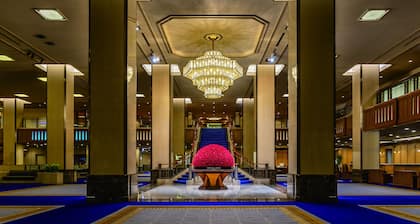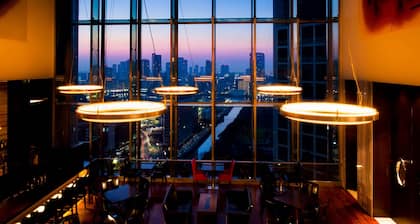From the 1600s to 1867, shoguns ruling Edo, as Tokyo was then called, resided in Edo Castle on this site in central Tokyo. The castle was the largest in the world at that time. In 1868, when the shogunate was displaced, Japan moved its capital from Kyoto to Tokyo and occupied the Edo Castle site. After fire destroyed much of the complex, they built a new imperial palace in 1888, much of which remains today. The walls, towers and moat bridges are reminiscent of how the site was hundreds of years ago, when ramparts and moats played a critical role in protecting the complex.
As the Tokyo Imperial Palace remains the primary residence of Japan's Emperor, the palace buildings and inner gardens are not open to the public. However, on 23rd December and 2nd January, the public is allowed to enter the inner palace gardens to offer their good wishes to the Imperial Family who wave from a balcony.
The Imperial Palace East Garden can be visited by the public most days (excluding Mondays and Fridays). Tours are by reservation only and have to be booked in advance via the Palace's website. The tours are restricted to certain areas and at no point are you allowed near the Palace itself.
Tours of the gardens are a pleasant and peaceful way to spend a couple of hours as they make for a welcome escape from the city. There are plenty of attractive green spaces and ponds with a landscaped Japanese garden. It's also possible to see the crumbling remains of the original castle walls.
Not far away from the palace, you’ll find the National Museum of Modern Art Tokyo and the fascinating science museum. Head north to Kitanomaru Park, the site of Nippon Budokan Hall. The Budokan is a world famous martial arts, wrestling and music performance centre, which has hosted well-known stars from all over the world.The Palace is located in the centre of Tokyo, just a few minutes away from Tokyo station. Stop at the Otemachi station near the East Garden or at Kudanshita, which is closest to Budokan
















